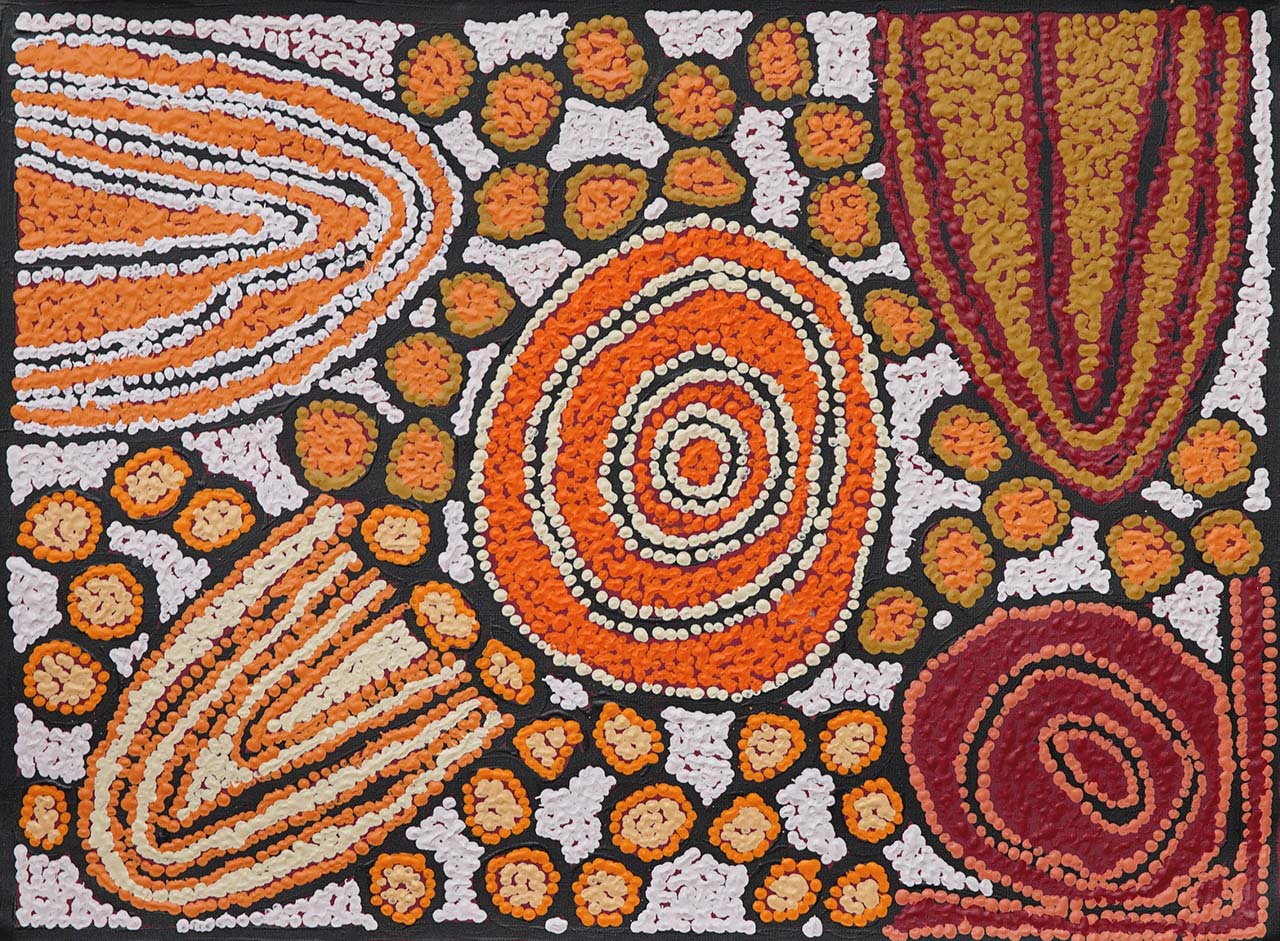Thoughts From An Opening Night – Ceremonial Songs & Art
Recently I was speaking at the opening of the exhibition by Deborah Young Nakamarra and Katherine Marshall Nakamarra. Half way through the talk I looked around at the whole exhibition and suddenly saw it in a new light. I thought I might tell you about that moment.

Artists sometimes tell us the story behind their paintings. They usually give their works a title which gives us some information about what a work might mean. Very often, we as viewers respond to the painting using that information as a guide.
We put together a meaning that is partly suggested by the artist and partly relates to our own experience. In this way the meaning of a work might be quite different from person to person. This is especially true of abstract paintings. It can be true of individual paintings and it can be true of a whole collection.
Let's go back to that opening night. The paintings in the exhibition related to two artists and their mother's great story about the ceremonial grounds, the sacred women's areas on their country. Looking around at the powerful repeating images, colours and rhythms I suddenly thought of another way of viewing the works.
I'm familiar with the idea of Aboriginal paintings being a type of map and on top of the map may be a kind of spiritual map of what the country means, rather than what the country is as a topography. I was looking at the exhibition and I was reminded of music. The paintings were suggesting to me thoughts of musical plans or sheet music for a song.
I've been told that these artists are telling us about their country and about the ceremonies and sacred sites that belonged to, Walangkura, the mother of the two artists exhibiting. She is a very famous artist who created the iconography about the ceremonies. The women gathered there to sing their ancestors songs that create the country and the great Katunga ancestor who travels through this country. By singing the ancestor's journey across the country, the performers in the ceremony are retelling a creation journey.

Here we have a family of artists who are all painting one story about these women's sacred sites across the land and there's 30 paintings on the wall, all from one family group. I was looking across them and to me, at that moment, every one of them seemed like a piece of the song.
It is as though it was a group of symbols that had it's own rhythm and it had all it's own interconnected notes and it had it's own dynamic. It occurred to me that the women singing up the country and singing up the ancestors were also the subject of the paintings. I felt this because I could see a kind of rhythm in the paintings.
If you want to take one of these large pieces of artwork, you get a kind of a visual version of a song line or a section of a ceremonial song that women are singing to the ancestors.
Individually, these pieces may not have generated that idea. It was when I saw them as a collection, I felt the combined power of those paintings. Individually they are paintings that are quite abstract and the iconography is very strongly Western Desert. They are very strongly connected with the artistic family who created them.
When you see them together, you can see these recurring motifs, you can see these connecting lines. You can see a kind of echo happening and that sets up a rhythm around the room across the paintings. I feel it sets up a kind of a percussive beat as you move from one to the other.
When I hear Aboriginal music, without knowing anything about it's content, I can hear a series of reinforcing ideas that get repeated over a long cycle of music. That creates this very strong impression of rhythm and the paintings seemed to me to echo that.
It was a privilege to host this exhibition. I've been moved by the power of these works and the stories this talented family have shared with us. Since that opening night I think about this whole collection a little differently. It has taken on an even greater meaning for me and I've really enjoyed that.
Read more:
